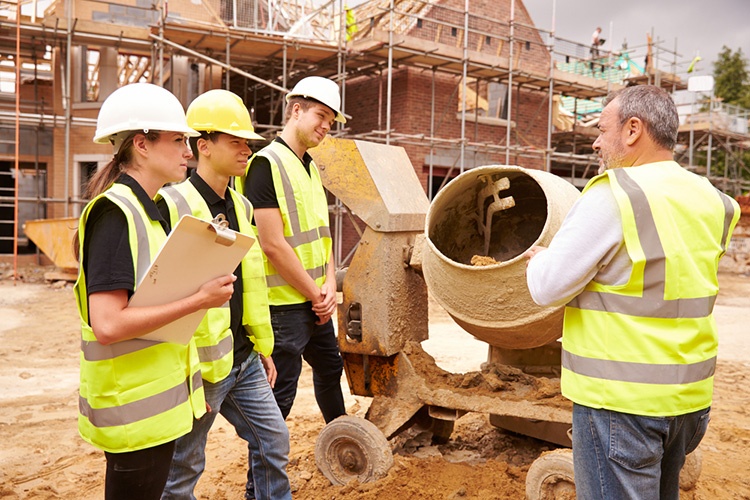
A person conducting business or undertaking (PCBU) is required to provide the information, training, and instructions necessary to protect all people from risks to their health and safety. Site inductions play an integral role in ensuring this is achieved.
Everybody potentially affected by a project should be given workplace induction training before the project commences. This informs them about the hazards and risks that they may face on site, how these should be controlled, and what to do in case of an emergency.
AS/NZS 4801 and Site Inductions
Health and safety policies are essential for not only your employees but stakeholders and customers as well. Complying to AS/NZS 4801 indicates that your company has a strong commitment to employee health and safety. Implementation of this standard enables your organisation to improve performance as it manages health and safety risks. Site inductions help you to adhere to this standard that addresses the following areas;
- Hazard identification, risk assessment, and relevant controls
- Resources, roles, responsibilities, accountability, and authority
- Competence training and awareness
- Emergency preparedness and response
- Communication, participation, and consultation
- Operational control
Why Are Site Inductions Important?
Any person carrying out construction work is required to undertake general construction induction training to receive a general construction induction training card or "White Card."
This training equips people with basic knowledge of work, health and safety requirements. A workplace specific induction process is also a proper way to check if other legal provisions are in place. For example that workers have white cards and that plant operators have the necessary high-risk work licenses.
What Information Should Be Provided in a Site Induction?
Site inductions vary with the type of construction being undertaken and the phase of the project. For projects that aren't complex, on the job training can suffice. However, for large and complex projects a more detailed induction process is necessary. The following information should be provided in a site induction;
- Hazards and risks unique to the site, for example, overhead power lines near the site.
- Control measures for risks, for instance, no-go zones in the case of overhead electric cables.
- Site-specific rules, for example, personal protective equipment that workers must wear and use.
- Safety documents, policies and plans specific to the workplace. This can include traffic management plans.
- Who to report incidents and hazards to and how they should be reported.
- Incident emergency and evacuation procedures that are associated with equipment in the workplace.
- Layout of the workplace which should include entries and exits, loading and unloading designated areas, location of facilities as well as first aid and security requirements.
What is Task Specific Induction?
Task specific inductions equip people carrying out a particular construction activity, with information on risks and control measures relating to a particular task. It should cover;
- Task to be executed
- Hazards, risks and control measures associated with carrying out the task.
- Personnel involved in the task including subcontractors.
- If required the Safe Work Method Statement (SWMS) and safe work procedures.
- Who is responsible for what and possible overlaps with other activities.
- Stipulated legal responsibilities, codes of practice or technical standards to be followed.
Should Workplace Induction Records Be Maintained?
It is important to record names of the training participants, the training content, details of the trainer and the date when the induction was carried out. The participants should also sign the training register. Remember that workers and affected people should be updated when there are changes in the workplace that may compromise their health and safety.
Why Use a Site Induction Template?
Templates don’t only allow for flexibility, but also save time and ensure uniformity. A site induction template helps you familiarise workers with OHSAS recommended rules and procedures. Using this template ensures that you do not leave any important details.
Site induction templates should include;
- Competencies and qualifications of inductees
- Procedures for reporting incidents, injuries, and hazards
- Workplace safety rules
- Induction using safe work method statement
- Training on use of specialised equipment
- Do people have the right Personal Protective Equipment for their jobs
- Emergency procedures
- Location and use of firefighting equipment
- Location of first aid facilities and who the first aiders are
- Workplace security procedures
- Introduce the health and safety representative
Implementing best-practice safety controls is useless if workers and other affected parties aren't aware of the hazards that construction work can present. A site induction ensures that everyone is familiar with health and safety risks associated with the construction as well as emergency procedures.
Download your free site induction template by clicking below:



.jpg)
